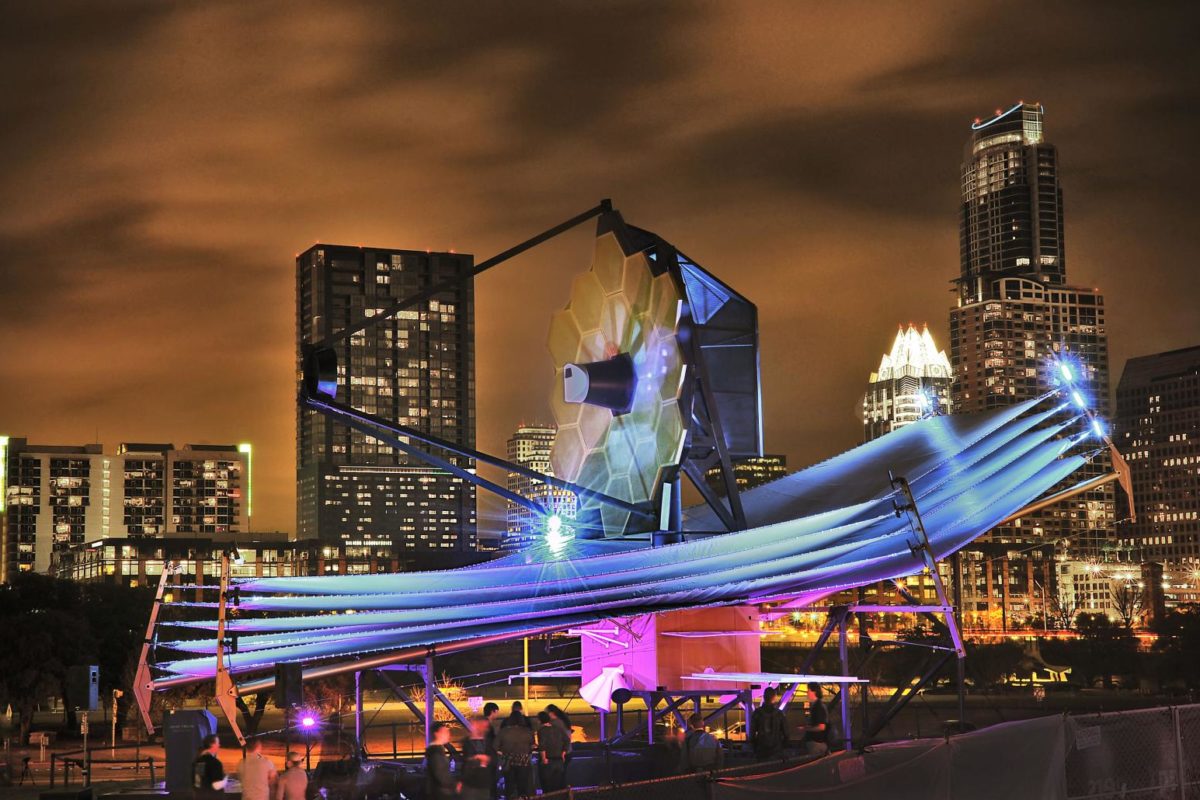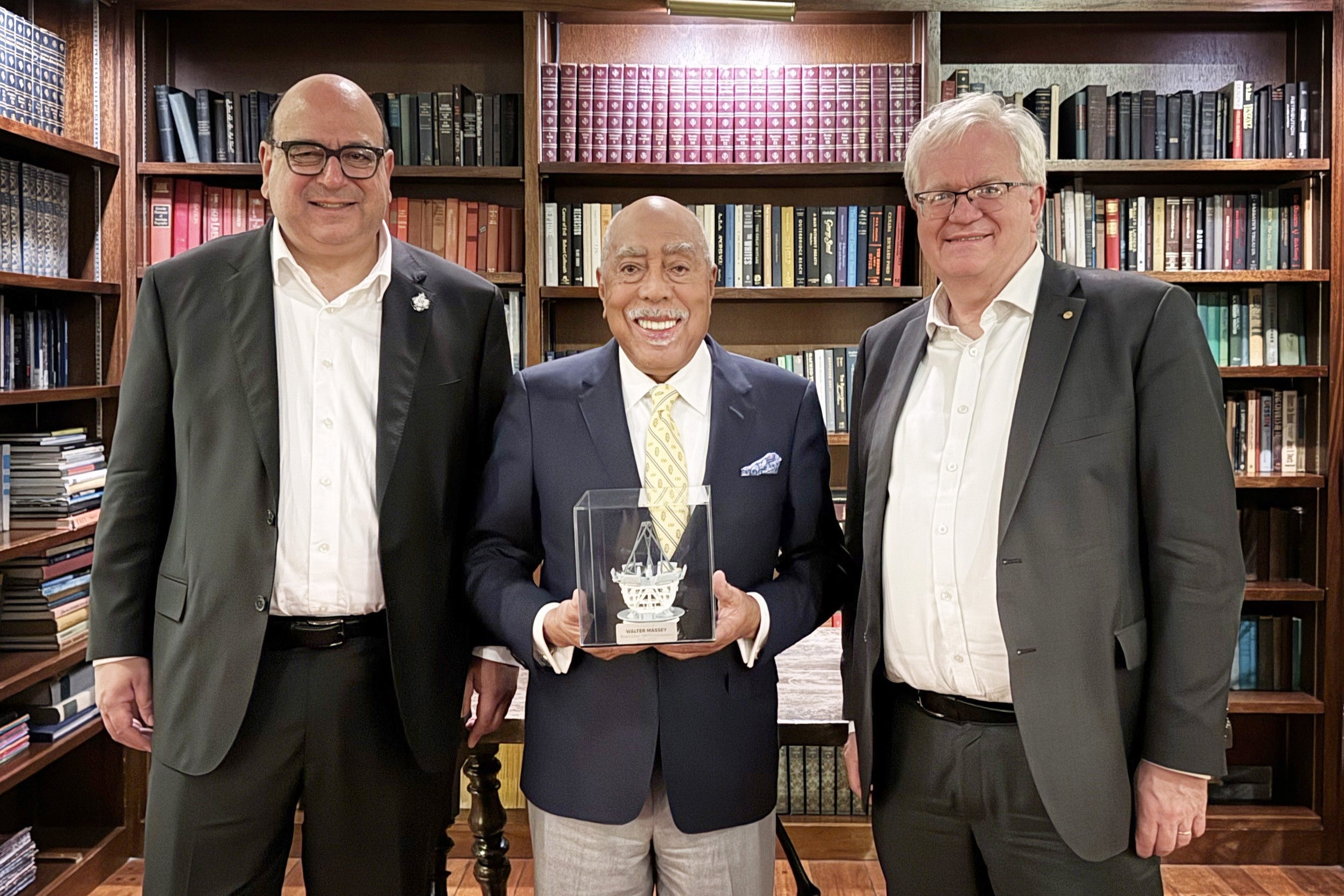Texas Astronomers Lead Major Projects in James Webb Space Telescope’s First Year
Astronomers at The University of Texas at Austin are set to lead some of the largest programs in the first year of NASA's James Webb Space Telescope (JWST).

A full-sized model of the James Webb Space Telescope is seen in Austin during the South by Southwest festival in 2013. This and other images are available from the JWST image gallery.
Astronomers at The University of Texas at Austin are set to lead some of the largest programs in the first year of NASA's James Webb Space Telescope (JWST), including the largest project overall. Set to launch this Halloween, the telescope will become operational by mid-2022. Altogether, UT astronomers received about 500 hours of telescope time in JWST's first year.
"COSMOS-Webb has the potential to be ground-breaking in ways we haven't even dreamt yet," Casey said. "You don't know what treasures are there to find until you use an incredible telescope like Webb to stare at the sky for a long time."
Another major first-year JWST project is led by UT associate professor Steven Finkelstein. The fourth-largest project the telescope will undertake in 2022, it's called the Webb Deep Extragalactic Exploratory Public (WDEEP) Survey. Finkelstein co-leads a large team along with Casey Papovich of Texas A&M University and Nor Pirzkal of the Space Telescope Science Institute.
In some ways, WDEEP is similar to COSMOS-Webb, Finkelstein said. Both are studying early galaxies, but at different early epochs in the history of the universe.
"Together, the projects COSMOS-Webb and WDEEP are bracketing the epoch of reionization," Finkelstein said. "So with WDEEP, we're trying to push to the very beginning of reionization when the earliest galaxies really started to form stars, and begin to ionize the intergalactic medium. Whereas Professor Casey's program is targeting the end of reionization, looking at the descendants of our galaxies and the bubbles they have created around them."
In terms of how the projects will be carried out, though, "WDEEP is almost the exact opposite," Finkelstein said. "While COSMOS-Webb is going very wide to look for the brightest and most massive galaxies, WDEEP is going deep. We are going to pick one place in the sky and stare at it for over 100 hours, following in the footsteps of the original Hubble Deep Field," he said.
He explained that the goal of WDEEP is to push the frontier in terms of the most distant galaxies detected. The team expects to find 50 or more galaxies at a time less than 500 million years after the Big Bang, which is "a completely unexplored epoch" in the universe's history, he said. And if they're lucky, they might find a galaxy at just 270 million years after the Big Bang, or 2% of the universe's present age of 13.8 billion years.
The goal in finding these most-distant galaxies is to help understand the early universe. "There are a wide range of theoretical predictions for what the universe should look like at these times," Finkelstein said. "Without observations, these predictions are completely unconstrained. Our goal is to try and pin down those models telling us what the earliest galaxies were like."
Other UT astronomers lead or co-lead JWST first-year projects on a variety of topics. These include faculty members Brendan Bowler, John Chisholm, Harriet Dinerstein, Neal Evans, and Caroline Morley; postdoctoral researchers Micaela Bagley, Will Best, and Justin Spilker; and graduate student Samuel Factor. The projects include studies of planet formation, the failed stars called brown dwarfs, the chemistry of pre-biotic molecules in newly forming stars, early stages of star formation, the dead stars called planetary nebulae, the formation of massive galaxies in the early universe, and more. Together, they will use about 100 hours of telescope time in the telescope's first year.



